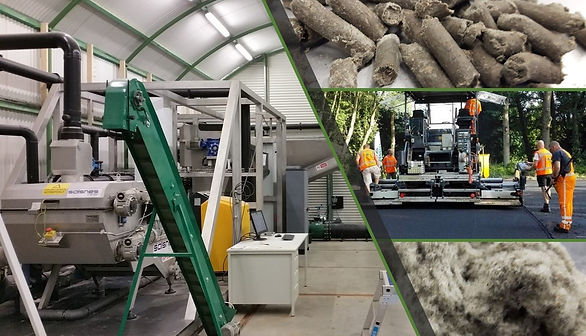
The project has received funding from the European Union's Horizon 2020 research and innovation programme under grant agreement No 690323


Introduction
SMART-Plant is a cooperation between 25 European partners to improve material recovery from sewage treatment plants. SMART-Plant is an acronym for “Scale-up of low-carbon footprint MAterial Recovery Techniques in existing wastewater treatment PLANTs.
SMART-Plants scale-up in real environments eco-innovative and energy-efficient solutions to renovate existing wastewater treatment plants and close the circular value chain by applying low-carbon techniques to recover materials that are otherwise lost. 7+2 pilot systems will be optimised for more than 2 years in real environments in 5 municipal water treatment plants, including also 2 post-processing facilities. The systems will be automated with the aim of optimising wastewater treatment, resource recovery, energy efficiency and reduction of greenhouse emissions. The comprehensive SMART portfolio consists of biopolymers, cellulose, fertilisers and intermediates that are recovered and processed up to the final end-products.
CirTec is one of the partners of SMART-Plant with cellulose recovery via the Cellvation® process. The first demonstration installation for the recovery of cellulose from sewage water is built at the STP Geestmerambacht with support of water authority Hollands Noorderkwartier. The installation recovers 400 kg cellulose per day. The recovered cellulose is marketed under the brand Recell® and used in various applications. Within the SMART-Plant consortium, Recell® is used to produce biocomposites and biopolymers. The recovered cellulose is also applied in asphalt, concrete, insulation material and other building materials. SMART-Plant has received funding from the European Union’s Horizon 2020 research and innovation programme under grant agreement No 690323.

Sewage water enters the treatment plant and flows through a coarse screen that removes large particles. After that, the Cellvation® process effectively starts when the sewage water is pumped through a grit chamber to remove the easily sinkable solids.

The remaining wastewater goes through the cellulose washer that separates the cellulose fibres from larger particles and hairs. The influent wastewater is then fed to a rotating belt filter which significantly improves the water quality and wastewater discharge options.

The filtrate is discharged and the solids are removed from the filter by means of a patented cleaning system that uses air pressure at the end of the filtration area. The cellulosic fibres coming from the rotating belt filter are pre-dewatered in the dewatering unit coupled to the filter and then, are further dewatered by the CellPress. The dry solids leaving the CellPress are hygienised, dried and polished to either fluff or pellets.
